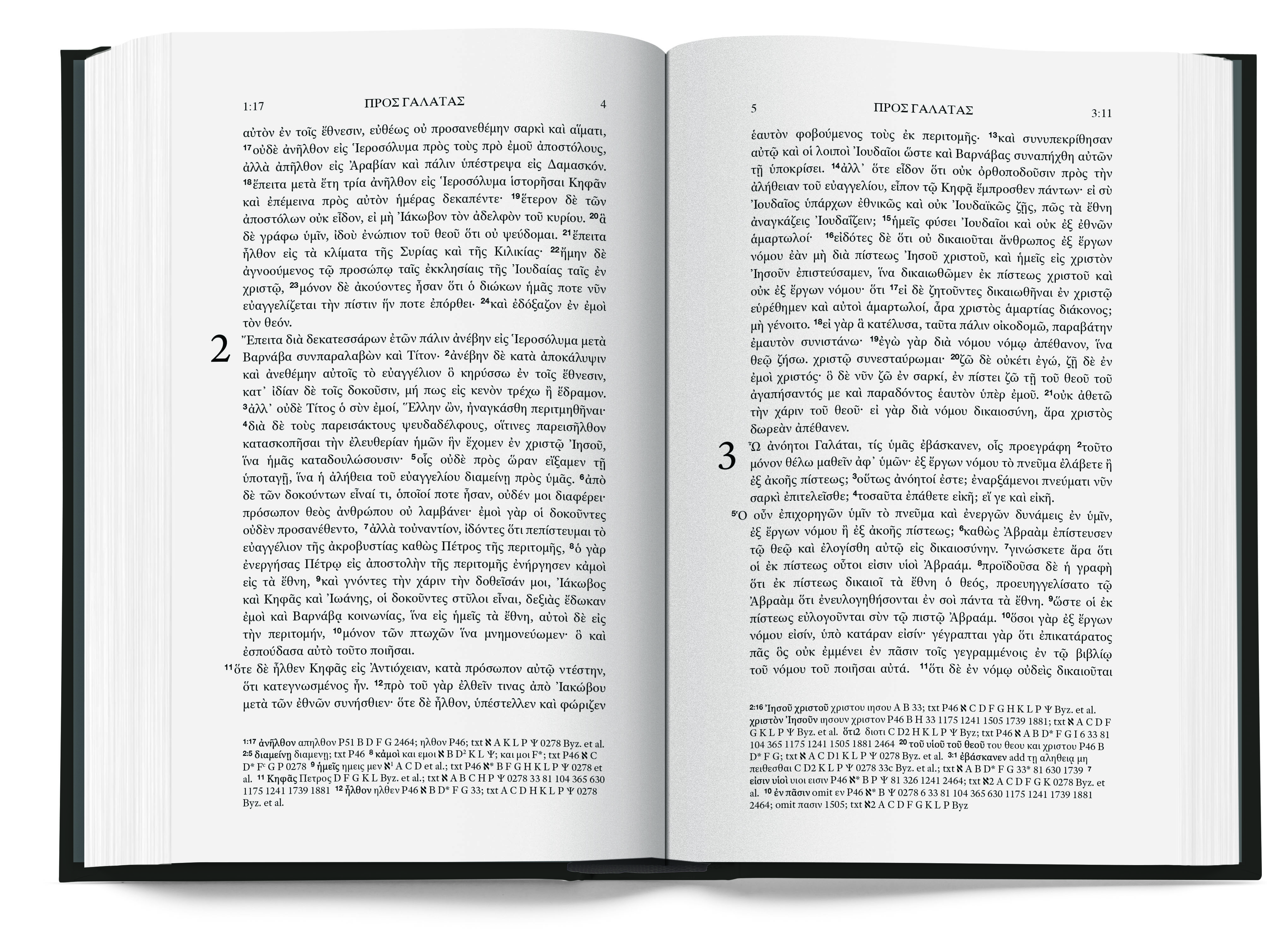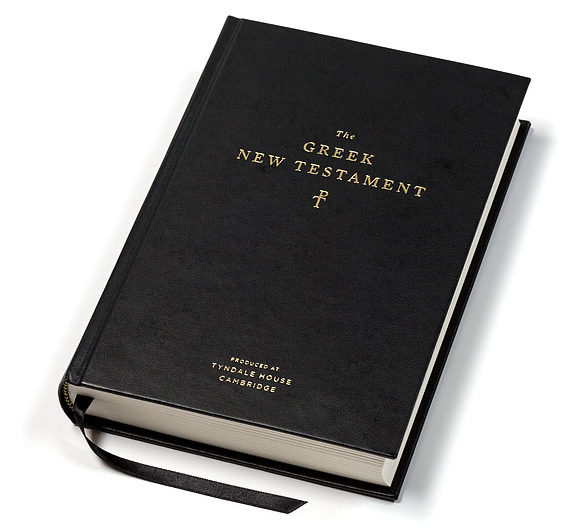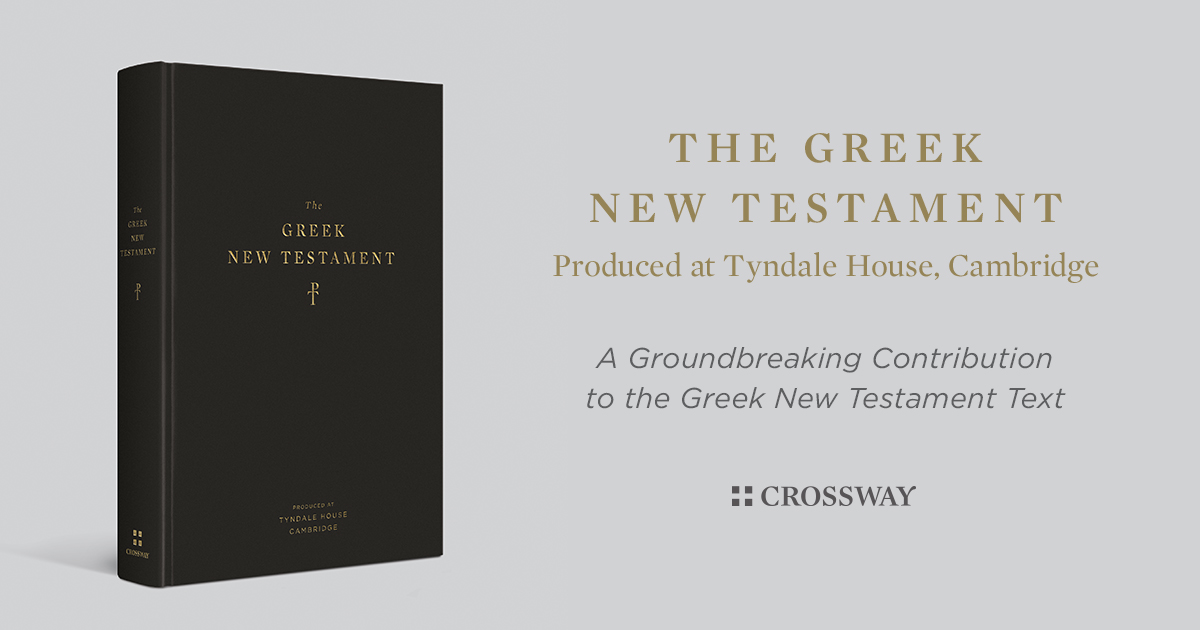There’s a new Greek Bible in town, and it’s different enough for you to ask, “is it better, and should I buy it?”
The Tyndale House Greek New Testament (THGNT) is the fruition of a decade of work by editor Dirk Jongkind and company (P. Williams, P. Head, and P. James). They began with the influential edition of S. Tregelles (1813-1875), which Westcott and Hort used to prepare their own groundbreaking edition in 1881. They chose Tregelles’ edition because they wanted an edition that prioritized early witnesses, those prior to the sixth century.
What began as a revision went well beyond that, for two reasons. First, many more early witnesses (especially papyri) have been discovered. Second, scholars have studied early scribal habits much since Tregelles’ day. Thus, any reading adopted is more certain not to be a scribal aberration, and must be attested in two or more Greek manuscripts, one being prior to the sixth century (Revelation is an exception due to its scant early evidence).
This move toward prioritizing early evidence is a move away from traditions that prioritize the Byzantine text-types (the KJV approach) and away from the newer Coherence Based Genealogical Method (CBGM), which is a “new set of computer-based tools for studying a new set of text-critical evidence based on a new principle for relating texts” (Peter Gurry).
The result is not a radically different text from the NA28 or UBS5 (which are now transitioning from reasoned eclecticism to the CBGM), but a text that is based on different principles. And those principles will make all the difference when determining the best reading in significant passages.
What’s It Look Like?

The layout is appealing. The paragraphs are marked by “ekthesis” (the left indentation of the first line) and the divisions were made by consulting with breaks in the early manuscripts. The apparatus is smaller than that of the NA28, including only the most important variants and much less of the documentary evidence. This makes glancing at the apparatus less daunting and more welcoming (I often avoid the apparatus while just reading the NA28, lest I get distracted by all the evidence).
The binding is Smyth-sewn and carries a lifetime guarantee. My version, the cheapest one, is hardcover. You can also buy a TrueTone edition for ~$23 more. More expensive leather editions will also become available. The binding definitely feels solid. I’m not afraid to fold the pages back over on themselves fully (glued bindings start coming apart when you do that). There’s one ribbon attached.
What’s Unique About It?
Uniquely, the order of the NT books is different from what we’re used to. Trying to follow the pattern of some earlier manuscripts, the editors include the Catholic epistles directly after Acts. Next come Paul’s epistles including Hebrews as the last epistle, and Revelation still brings up the rear.
Another unique feature is that the editors try to follow spelling conventions of early manuscripts rather than the standardized spelling we have in the NA/UBS tradition. For example, you will see (in places) γεινομαι, γεινωσκω, κλειν, and μεισεω (ει instead of ι). You will see Abraham with a rough breathing mark rather than a smooth, and iota subscripts are omitted if they do not mark a dative or show connections between different lexical forms.
While these decisions may seem off-putting, the editors are trying to represent the language of the NT as it was found in the earliest manuscripts, which is (from a linguistic perspective) a worthy goal and pedagogically useful. Also, after reading through lots of passages, none of this threw me off, so it’s nothing to worry about.
The back contains a concise introduction explaining all the editorial decisions and also contains an appendix with a chart of all the witnesses referenced in the apparatus. It’s (thankfully) much briefer than the NA28 appendix and contains the same content: Manuscript number, century of composition, preserved contents, and present manuscript location.
Should I Buy It?
The big question is, what is this edition good for? First, getting a new Greek NT is always exciting. It re-kindles one’s passion for reading the text, and therefore, from our perspective, any new edition is worth getting and using (you can always sell old editions or give them away).
Second, I’d say this edition is great for daily reading. The layout is attractive, so you won’t mind seeing it each day. The small apparatus lets you check out early alternate readings, which also helps your Greek (it makes you think more about unknown readings). I’ve been using it lately for exegeting passages as I prepare to teach on them, but in this case you will want a larger apparatus handy to spot-check for more variants.
Finally, simply having the text handy is useful when evaluating variants, in the same way consulting multiple English translations is useful for evaluating your own translations. If the THGNT disagrees with NA28/UBS5, why does it? If all agree, does that make a reading more certain? William Varner has utilized the THGNT in just this manner in his new James: A Commentary on the Greek Text (Fontes, available next week). For each section of Greek text, he compares all the readings of the major Greek editions, including now THGNT. I recommend doing the same for your own study.
Buying Options
On Amazon, you can buy the Hardback for $34 or the TrueTone for $57. On CBD, you can get the Hardback for $28 + ~$6 shipping (if you don’t have Amazon Prime, this will be cheaper).

